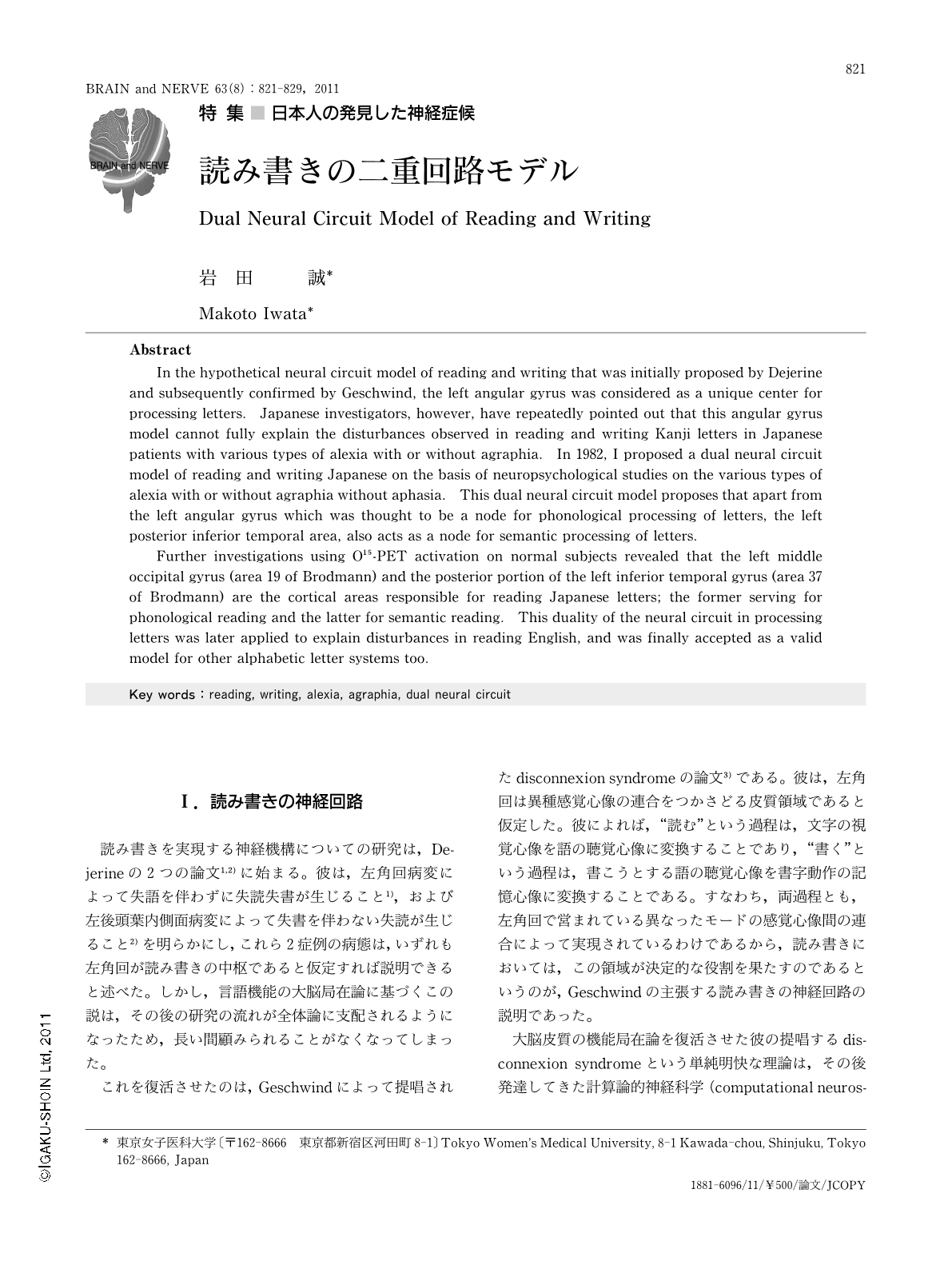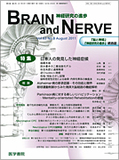Japanese
English
- 有料閲覧
- Abstract 文献概要
- 1ページ目 Look Inside
- 参考文献 Reference
Ⅰ.読み書きの神経回路
読み書きを実現する神経機構についての研究は,Dejerineの2つの論文1,2)に始まる。彼は,左角回病変によって失語を伴わずに失読失書が生じること1),および左後頭葉内側面病変によって失書を伴わない失読が生じること2)を明らかにし,これら2症例の病態は,いずれも左角回が読み書きの中枢であると仮定すれば説明できると述べた。しかし,言語機能の大脳局在論に基づくこの説は,その後の研究の流れが全体論に支配されるようになったため,長い間顧みられることがなくなってしまった。
これを復活させたのは,Geschwindによって提唱されたdisconnexion syndromeの論文3)である。彼は,左角回は異種感覚心像の連合をつかさどる皮質領域であると仮定した。彼によれば,“読む”という過程は,文字の視覚心像を語の聴覚心像に変換することであり,“書く”という過程は,書こうとする語の聴覚心像を書字動作の記憶心像に変換することである。すなわち,両過程とも,左角回で営まれている異なったモードの感覚心像間の連合によって実現されているわけであるから,読み書きにおいては,この領域が決定的な役割を果たすのであるというのが,Geschwindの主張する読み書きの神経回路の説明であった。
Abstract
In the hypothetical neural circuit model of reading and writing that was initially proposed by Dejerine and subsequently confirmed by Geschwind, the left angular gyrus was considered as a unique center for processing letters. Japanese investigators, however, have repeatedly pointed out that this angular gyrus model cannot fully explain the disturbances observed in reading and writing Kanji letters in Japanese patients with various types of alexia with or without agraphia. In 1982, I proposed a dual neural circuit model of reading and writing Japanese on the basis of neuropsychological studies on the various types of alexia with or without agraphia without aphasia. This dual neural circuit model proposes that apart from the left angular gyrus which was thought to be a node for phonological processing of letters, the left posterior inferior temporal area, also acts as a node for semantic processing of letters.
Further investigations using O15-PET activation on normal subjects revealed that the left middle occipital gyrus (area 19 of Brodmann) and the posterior portion of the left inferior temporal gyrus (area 37 of Brodmann) are the cortical areas responsible for reading Japanese letters; the former serving for phonological reading and the latter for semantic reading. This duality of the neural circuit in processing letters was later applied to explain disturbances in reading English,and was finally accepted as a valid model for other alphabetic letter systems too.

Copyright © 2011, Igaku-Shoin Ltd. All rights reserved.


